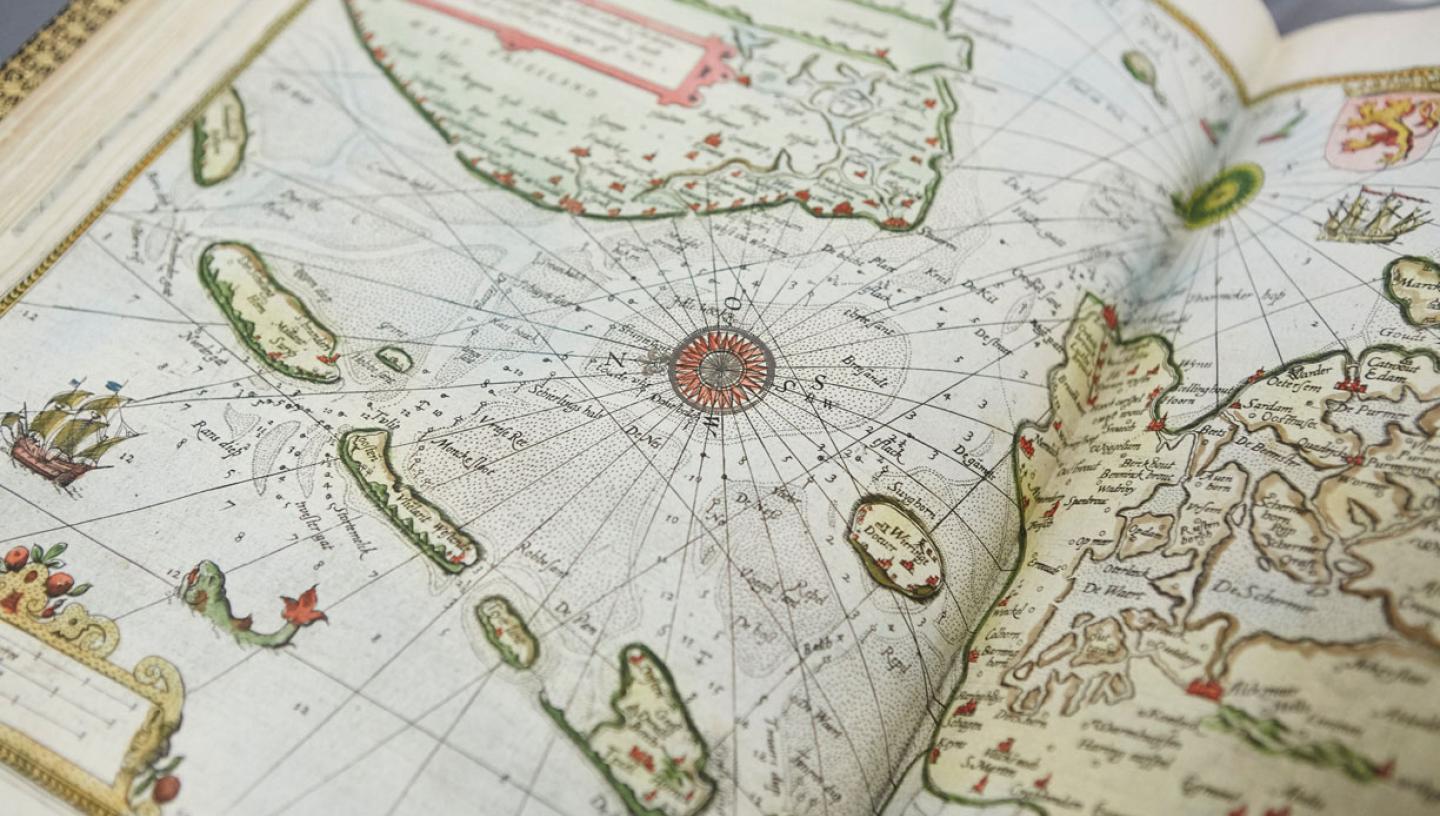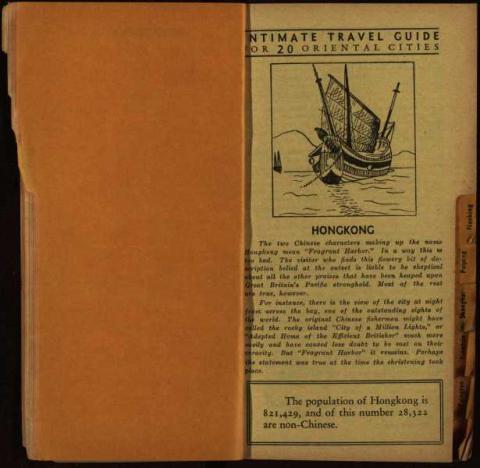
Essential Information
| Location |
National Maritime Museum
|
|---|---|
18 Sep 2012
This item of the month is a travel guide giving a charming and enthralling insight into journeying in the Orient
March’s item of the month is a travel guide giving a charming and enthralling insight into journeying in the Orient, published in March 1936, a few years prior to the Second World War. It is written in what was considered a friendly and informal style at the time, using American English. It was a time when only the rich or leisured classes could afford to travel such long distances for their holidays, and it was an era of opulence and exclusivity in travel which was permanently changed by the commencement of war in September 1939.
Published by the Mercury Press of Shanghai, the guide gives listings for the traveller of shops, services and facilities in each of 20 Oriental cities. It also gives fascinating but very concise accounts of the history and characteristics of each of the cities.
Two of the captivating Oriental locations described in the book are Hong Kong and Tientsin, which is modern day Tianjin.
Hong Kong

The guide conjures up a wonderful, affectionate picture of the British Hong Kong administration at the time of writing. Hong Kong is described as ‘Britain’s Gibraltar of the Pacific’. Gibraltar, which used to be an important base for the Royal Navy, is informally known as the ‘The Rock’, and Hong Kong is indeed a rocky island, so the comparison is an apt one.
The very international nature of the territory is stressed: ‘One finds here under smooth running British rule a group of people including representatives from every race and creed under the sun’. The guide states that out of 821,429 residents, 28,322 were non-Chinese, a significant number compared to most cities at the time.
Everyone, from visitors to locals, is described as being under the ‘… benevolent eye of a tall ruddy cheeked English police inspector and an equally tall but bewhiskered Sikh traffic officer’.
The local sights are pointed out, in particular a dark-green mountain called ‘The Peak’ (or Victoria Peak, or Mount Austin). Located on the west side of Hong Kong Island, the mountain towers to a height of 1823 feet according to the guide (today it is measured at 552 metres which works out at 1811 feet). ‘The Peak’ remains one of Hong Kong’s most popular tourist attractions.
The theme of opulence and wealth in the goods and services directory provided for Hong Kong is very evident, with purveyors of ivory and jade being listed. No less than nine suppliers of ‘laces, linens, embroideries and silk underwear’ are identified! Steamship lines feature prominently, indicating their importance as a means of travel in the 1930s.
Leaving Hong Kong behind, we come onto our second Oriental location Tientsin.
Tientsin
Tientsin (modern day Tianjin) is linked to Hong Kong, in one example, by the Opium Wars. As has been previously mentioned, it was after the First Opium War of 1839–42 that Hong Kong became a colony of the British Empire. The first part of the Second Opium War, 1856–60, was ended by the Treaty of Tientsin in June 1858. This treaty unlocked previously closed Chinese ports to non-Chinese, allowed foreigners into Beijing, legitimately allowed opium to be imported, and also permitted Christian missionaries to operate.
In the guide, Tientsin is described as being a ‘great River Port’. At the time it was the port of entry and gateway to Beijing, being strategically placed 70 miles from the city. At the time, Tientsin was heavily used for commerce. Despite this, the travel guide feels that Tientsin deserves a better fate than to be a mere gateway to somewhere else.
Surprisingly for a port of such strategic importance, access to Tientsin from the sea at the time via the Hai Ho River was blocked as the river was silted up. The guide tells us that only occasionally could large vessels reach the Tientsin Bund (the waterfront area), and travellers were obliged to leave their ships at Tangku and finish their journeys by rail. Drought in winters, and flooding in summer was an issue. Today, the engineering of dams, water control and drainage works have solved this problem.
The account of the characteristics of Tientsin is briefer than the rapturous description of Hong Kong. At the time Tientsin was composed of four concessions, from England, France, Italy and Japan, three ‘Special Administrative Districts’ and one native city. Tientsin, like Hong Kong, was very international for the time. The travel guide tells us that out of 309, 000 Tientsin residents, around 10,000 were foreigners. Yet the residents of each of these foreign concessions counted as nationals of their own countries and could conduct their personal and professional lives under their own national laws.
In line with the luxurious and wealthy lives which the book assumes its readership will have, the goods and services directory for Tientsin focuses on luxury items such as lingerie, silks and millinery. As with Hong Kong, in Tientsin steamship lines again feature prominently.
There are interesting snippets of contemporary sights and trivia at the bottom of each page of the goods and services directory. Tientsin had some weird and wonderful exports and sights at the time, from exporting camel’s wool to an ice rink roofed with the biggest p’eng or mat awning ever known to be produced.
Amazingly, it was possible even in 1936 to fly between Shanghai and Tientsin, the guide tells us, illustrating the strategic importance of Tientsin. Today Tianjin is an industrial and economic powerhouse, very much part of the economic might of modern China. The roots of that success can be seen in the travel guide, with air travel available even before the Second World War.
Order the guide from the Caird Library
This travel guide gives a wonderful insight into the travel of the rich and leisured classes of its era. It is notable for its period detail and informality. It is available to request from the Caird Library, item no PBH4205.
To request Caird Library items, readers will first need to register on our online ordering system Aeon at rmg.co.uk/aeon.
Please note that manuscript items are available from rmg.co.uk/archivecatalogue.
Please check our website for more information about the Caird Library at rmg.co.uk/researchers/library/
Sue, Digital Resources Librarian